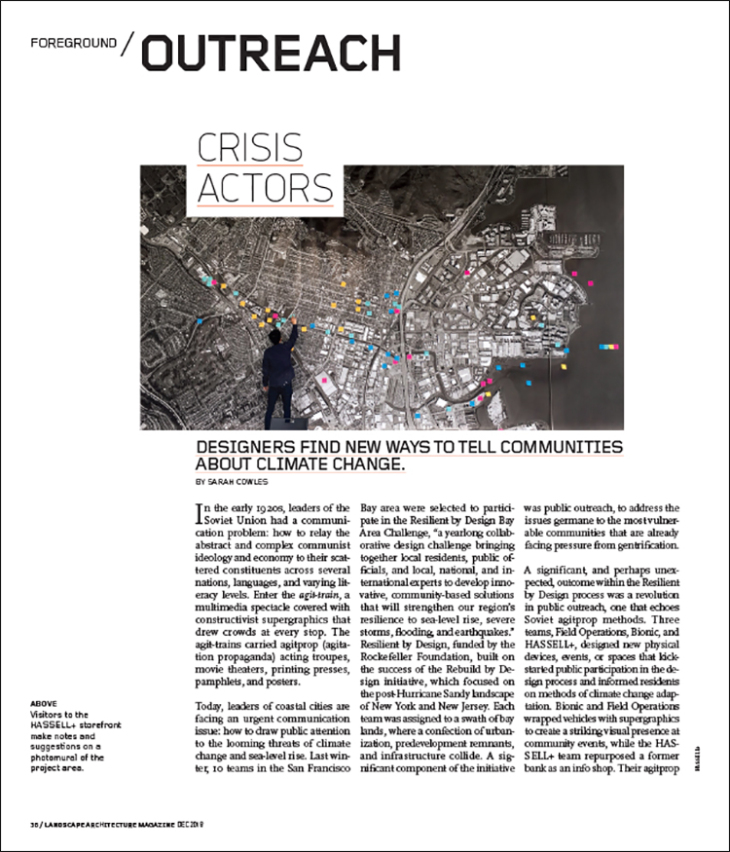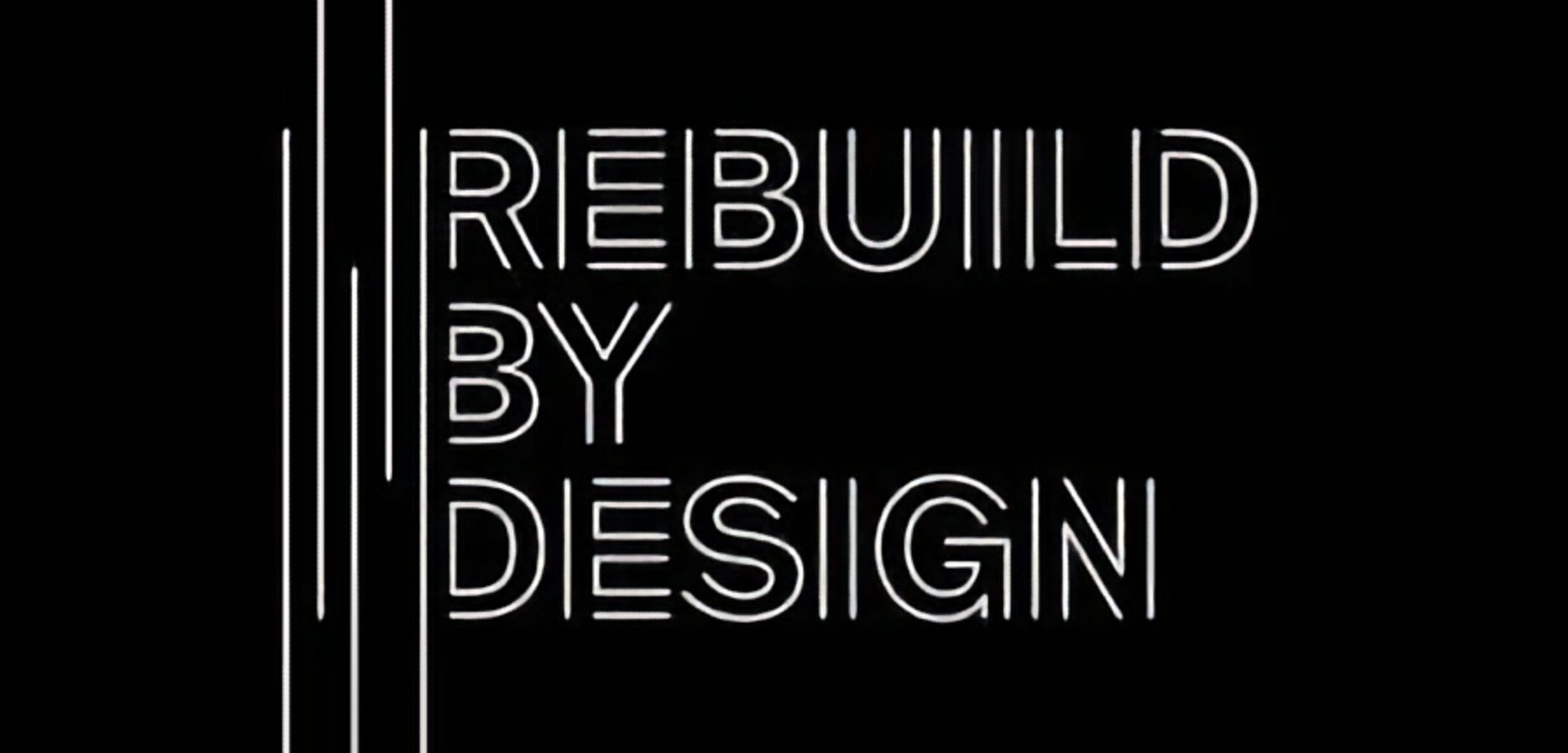Landscape Architecture Magazine: In the early 1920s, leaders of the Soviet Union had a communication problem: how to relay the abstract and complex communist ideology and economy to their scattered constituents across several nations, languages, and varying literacy levels. Enter the agit-train, a multimedia spectacle covered with constructivist supergraphics that drew crowds at every stop. The agit-trains carried agitprop (agitation propaganda) acting troupes, movie theaters, printing presses, pamphlets, and posters.
Today, leaders of coastal cities are facing an urgent communication issue: how to draw public attention to the looming threats of climate change and sea-level rise. Last winter, 10 teams in the San Francisco Bay area were selected to participate in the Resilient by Design Bay Area Challenge, “a yearlong collaborative design challenge bringing together local residents, public officials, and local, national, and international experts to develop innovative, community-based solutions that will strengthen our region’s resilience to sea-level rise, severe storms, flooding, and earthquakes.” Resilient by Design, funded by the Rockefeller Foundation, built on the success of the Rebuild by Design initiative, which focused on the post-Hurricane Sandy landscape of New York and New Jersey. Each team was assigned to a swath of bay lands, where a confection of urbanization, predevelopment remnants, and infrastructure collide. A significant component of the initiative was public outreach, to address the issues germane to the most vulnerable communities that are already facing pressure from gentrification.
A significant, and perhaps unexpected, outcome within the Resilient by Design process was a revolution in public outreach, one that echoes Soviet agitprop methods. Three teams, Field Operations, Bionic, and HASSELL+, designed new physical devices, events, or spaces that kick-started public participation in the design process and informed residents on methods of climate change adaptation. Bionic and Field Operations wrapped vehicles with supergraphics to create a striking visual presence at community events, while the HASSELL+ team repurposed a former bank as an info shop. Their agitprop works were especially suited to the constraints of Instagram. The supergraphics make striking backgrounds for selfies, and all teams made liberal use of hashtags. These bold environments prompted action in real and virtual communities. READ MORE>>

